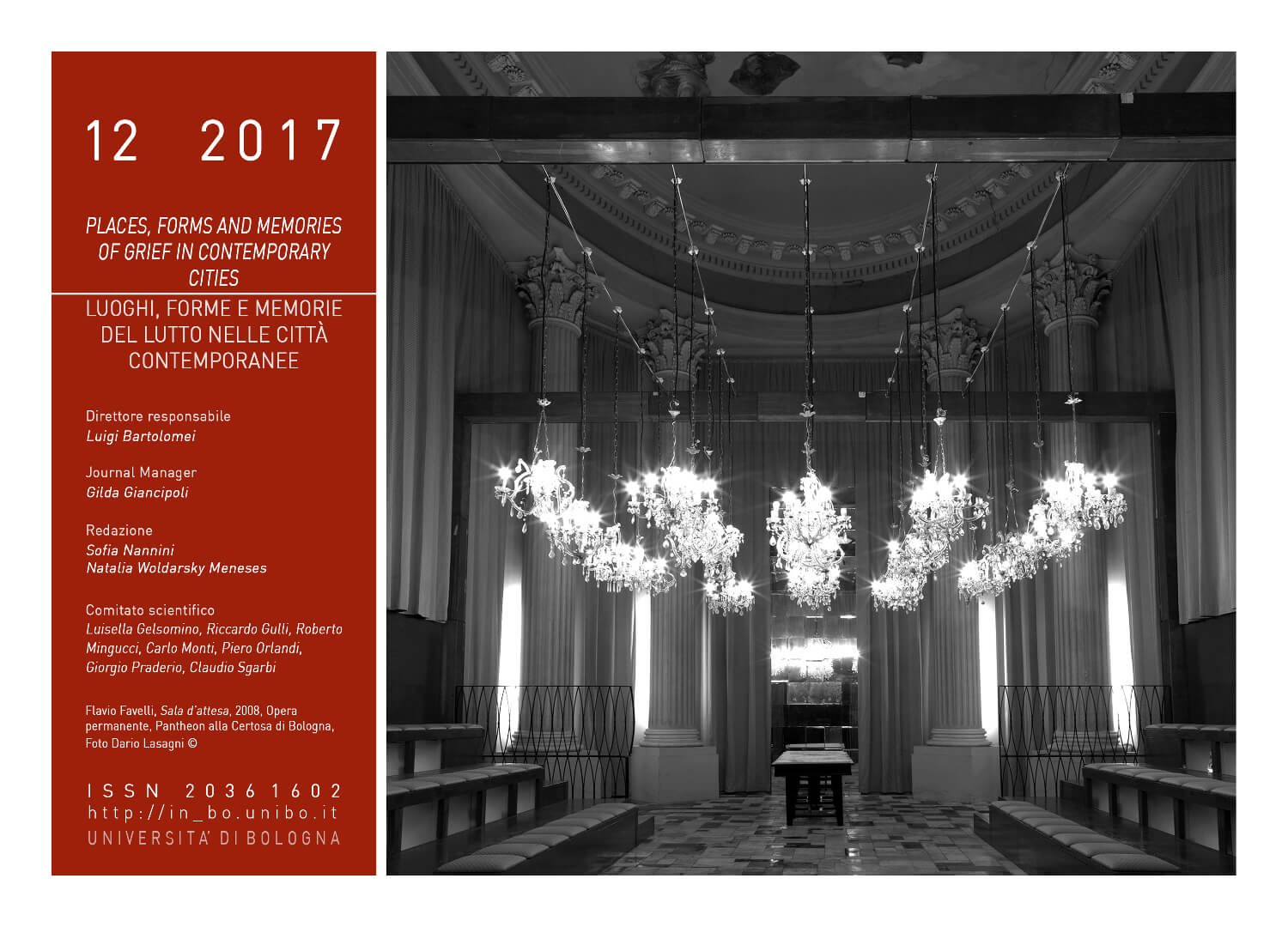Confederate War Grief Transformed: the Openness of Memorials to New Meanings
DOI:
https://doi.org/10.6092/issn.2036-1602/7859Keywords:
Social memory, memorialization, War memorials, US Civil War, SlaveryAbstract
Civil War memorials in the United States represent the difficult national memory of a still contested internecine war over slavery, social equity, and public values. Today there is a heated debate about physical monuments honoring Confederate leaders and soldiers. For many, the original social memory has disappeared and meanings attributed to them have shifted from association with war dead, or the cult of the “lost cause,” to symbols of slavery and white supremacy. Their forms are open to new interpretations connected to human subjectivity and situatedness. Do these confederate memorials glorify racism or absorb the historical memory of grief? This paper examines the ongoing Confederate war memorial debate as evidence of the powerful role of monuments in the city and their changing meaning.References
Southern Poverty Law Center, Whose Heritage? Public Symbols of the Confederacy, Montgomery, Alabama, 2016, p. 8
Guy Guggliotta, “New Estimate Raises Civil War Death Toll” in The New York Times, April 12, 2012
David Blight, Race and Reunion: The Civil War in American Memory, Harvard University Press, Cambridge, 2001, p. 64.
Also see John Bodnar, Remaking America: Public Memory, Commemoration, and Patriotism in the Twentieth Century, Princeton University Press, Princeton, 1992
Yi-Fu Tuan, “The Significance of the Artifact” in Geographical Review, 1980, 70(4), pp. 466
James Mayo, “War Memorials as Political Memory” in Geographical Review, January 1988, 78(1), p. 62
Kenneth E. Foote, Shadowed Ground: America’s Landscapes of Violence and Tragedy, The University of Texas Press, Austin, 1997
David Lowenthal, The Past is a Foreign Country, Cambridge University Press, Cambridge, 1985; Svetlana Boym, The Future of Nostalgia, Basic Books, New York, 2002; and Paul Ricoeur, Memory, History, Forgetting, University of Chicago Press, Chicago, 2004
Thomas E. Schott, Alexander H. Stephens of Georgia: A Biography, Louisiana State University Press, Baton Rouge and London, 1996, p. 334
William H. Wilson, The City Beautiful Movement, The Johns Hopkins University Press, Baltimore, 1989; Charles Mulford Robinson, Modern Civic Art: Or, The City Made Beautiful, G.P. Putnam’s Sons, New York and London, 1903; and Peter Hall, Cities of Tomorrow, Wiley-Blackwell, London, 2002
Mitch Landrieu, “Mitch Landrieu’s Speech on the Removal of Confederate Monuments in New Orleans” in The New York Times, May 23, 2017
Associated Press, “In New Orleans, Confederate Monuments are Finally Gone” in New York Post, May 20, 2017
Sophie Abramowitz, Eva Latterner, and Gillet Rosenblith, “Tools of Displacement” in Slate, June 23, 2017
Megan Garber, “Why Charlottesville?” in The Atlantic, August 12, 2017
Jacey Fortin, “The Statue at the Center of Charlottesville’s Storm” in The New York Times, August 13, 2017; Dahlia Lithwick, “They will not Replace Us” in Slate, August 13, 2017; Benjamin Wallace-Wells, “The Fight over Virginia’s Confederate Monuments” in The New Yorker, December 4, 2017
David A. Graham, “Durham’s Confederate Statue Comes Down” in The Atlantic, August 15, 2017; Maggie Astor, “Protesters in Durham Topple a Confederate Monument” in The New York Times, August 14, 2017
Nicholas Fandos, Richard Fausset and Alan Blinder, “Charlottesville Violence Spurs New Resistance to Confederate Symbols” in The New York Times, August 16, 2017
Bill Niven, “War Memorials At The Intersection Of Politics, Culture And Memory” in Journal of War & Culture Studies, 2007, 1(1), pp. 39-45; Isaac Stanley-Becker. “Rewriting History or Attending to the Past? Monuments still Confound Europe, Too” in The Washington Post, August 19, 2017
Downloads
Published
How to Cite
Issue
Section
License
Copyright (c) 2018 Phoebe Crisman
Copyrights and publishing rights of all the texts on this journal belong to the respective authors without restrictions.
This journal is licensed under a Creative Commons Attribution-NonCommercial 4.0 International License (full legal code).
See also our Open Access Policy.
Metadata
All the metadata of the published material is released in the public domain and may be used by anyone free of charge. This includes references.
Metadata — including references — may be re-used in any medium without prior permission for both not-for-profit and for-profit purposes. We kindly ask users to provide a link to the original metadata record.







